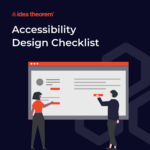Development & Engineering
Software Development Company Pricing Guide August 2025
07 AUG 2025
7 mins read


In today’s fast-paced digital world, understanding the cost of software development is crucial for businesses of all sizes. Whether you’re a startup founder looking to build a new app or a marketing manager planning a software upgrade, knowing what to expect in terms of pricing can help you budget effectively. This guide will walk you through the average cost of software development, explore various pricing models, and provide insights on how to plan your software development budget.
The cost of software development can vary widely depending on several factors, including the complexity of the project, the size of the development team, and the location of the developers.
Key Factors Influencing Software Development Costs
- Project Complexity: A simple app with basic features will cost less than a complex system. Complex systems have many integrations and advanced functions.
- Development Team: The size and expertise of the development team can significantly impact costs. A larger team with specialized skills might be necessary for complex projects.
- Location: Developers’ geographical location affects pricing, with rates typically higher in North America and Western Europe compared to Eastern Europe or Asia.
- Technology Stack: The choice of programming languages and frameworks can also influence the cost. Some technologies require more time and expertise to implement.
Exploring Software Pricing Models
Choosing the right pricing model is an essential step in planning your software development budget. Here are some common models to consider:
Fixed Price Model
In a fixed price model, the cost is agreed upon before the project begins. This model works best for projects with well-defined requirements and little expected change. It provides cost certainty but can be less flexible in accommodating changes.
Time and Materials Model
The time and materials model charges based on the actual time spent and resources used. This model is more flexible and allows for changes during the project. However, it can lead to higher costs if not managed carefully.
Dedicated Team Model
This model involves hiring a dedicated team for your project, usually on a long-term basis. It’s ideal for ongoing projects where requirements may evolve. It offers flexibility and direct control over the team but requires careful management to avoid cost overruns.
Subscription Model
For SaaS (Software as a Service) solutions, a subscription model charges a regular fee for access to the software. This model provides a predictable cost structure and ongoing support but might require long-term commitments.
Planning Your Software Development Budget
Creating an accurate software development budget involves more than just estimating costs. Here’s how to approach it:
Step 1: Define Your Requirements
Start by clearly defining the scope and objectives of your project. Understand what features you need and prioritize them. This will help in getting accurate cost estimates and choosing the right development team.
Step 2: Choose the Right Pricing Model
Select a pricing model that aligns with your project requirements and budget constraints. Consider the flexibility you might need and the level of control you want over the development process.
Step 3: Get Detailed Estimates
Request detailed proposals from multiple software development companies. Compare their estimates, methodologies, and past work. Look for transparency in how they calculate costs.
Step 4: Plan for Contingencies
Software development often involves unforeseen challenges. Include a contingency fund in your budget to cover unexpected costs, typically around 10-20% of the total budget.
Step 5: Monitor and Adjust
Regularly monitor the progress of your project and keep track of expenses. Be prepared to adjust your budget and scope as necessary to keep the project on track.
Tips for Managing Software Development Costs
- Prioritize Features: Focus on essential features first and consider adding more complex functionalities in future updates.
- Leverage Existing Technologies: Utilize existing platforms and frameworks to reduce development time and costs.
- Collaborate Closely with Developers: Maintain open communication with your development team to ensure alignment and address issues promptly.
- Regularly Review Progress: Schedule regular check-ins to review progress and make necessary adjustments to the project scope and budget.
Why Choose IdeaTheorem?
At Idea Theorem, we understand that the journey of software development can be complex and costly. We offer tailored solutions that align with diverse pricing models, ensuring that our clients receive the maximum value for their investment. By leveraging our expertise in various software development methodologies, we guide businesses through each phase, from conceptualization to deployment. Our approach is not just about delivering a product; it’s about creating a partnership that drives innovation and fosters growth. With Idea Theorem, you can rest assured knowing that your project is in capable hands, managed by a dedicated team that prioritizes your business objectives.
Feel free to adjust any specific details or include more information about Idea Theorem as needed. Would you like any further assistance or specific areas to focus on for this context?
Conclusion
Understanding the average cost of software development and choosing the right pricing model are critical steps in managing your software development budget. By carefully planning and monitoring your project, you can ensure that you get the most value for your investment. Whether you’re building a new application or upgrading an existing system, this guide provides the insights you need to navigate the complex world of software development pricing effectively.
In summary, being informed and strategic about software development costs and pricing models will help you make better decisions and achieve your business goals. As technology continues to evolve, staying updated with current trends and pricing practices will ensure that your software solutions remain competitive and effective.





